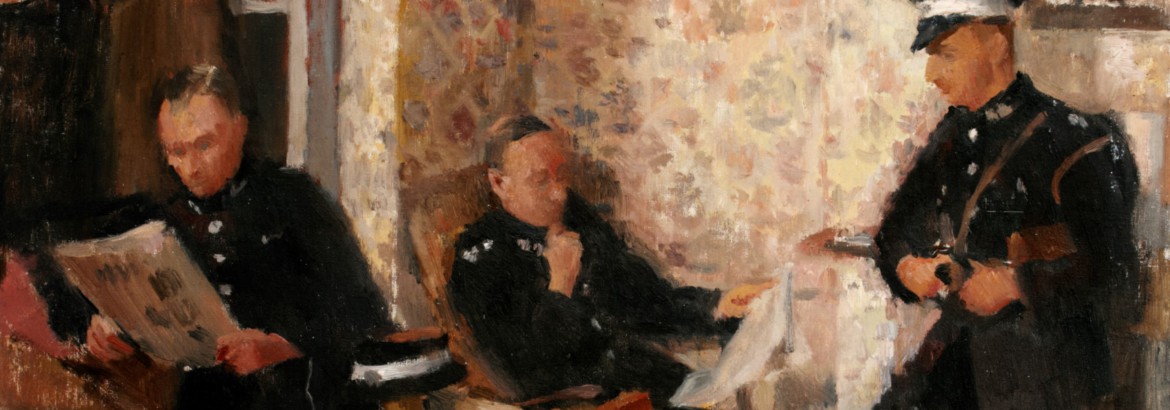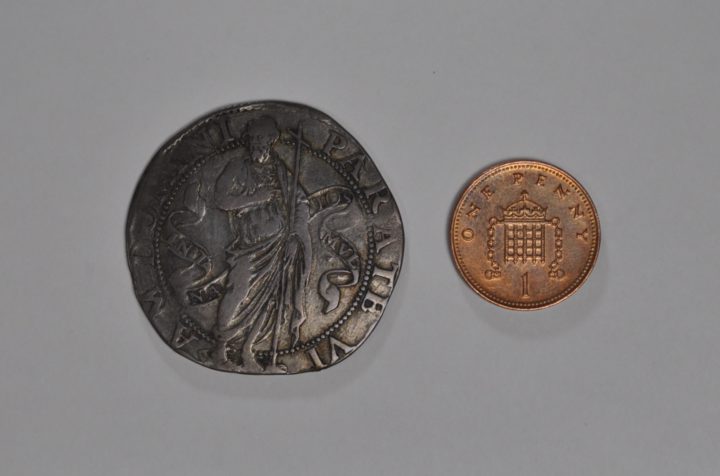
Jean de Valette (b.c.1495) is one of the most influential figures in the history of the Order of St. John. A short trip around the Order Gallery highlights the importance of Valette to the history of Malta. A unique crystal cross and a golden bust are devoted to him. He served as Grand Master of the Order of St John between 1557 and his death in 1568. He fought against Ottoman troops for much of his time in the Order and was present at the siege of Rhodes in 1522. His leadership spanned the Ottoman siege of Malta, and was highly influential in the Order’s time on the island. The city that was founded on the island, which is the capital of Malta, was named Valetta in his honour.

There are a number of coins of Jean de Valette in the Museum collection, but this one is by far the largest. It is the only six Tari coin of Valette held by the museum and has the highest silver content of any of Valette’s coins. He was the first Grand Master to mint a silver coin as large as this one. The unit of Tari was adopted after the Order arrived in Malta, based on Sicilian coinage. Jean de Valette was highly influential in the development of coinage in Malta.

Among those born of women
there arose none greater than John the Baptist
who prepared the way of the Lord in the wilderness.
Alleluia.
The inscription around the edge reads “PARATE VIAM DOMINI”, meaning “prepare thee the way of the Lord”, and is a continuation of the praising of the Baptist. It is also a biblical reference, as variants of this phrase appear a number of times in the Old and New Testaments. This particular quote probably refers to John 1:23:
John the Baptist said, ‘I am a voice of one crying in the wilderness, ‘Make straight the way of the Lord.’ as Isaiah the prophet said.’
The biblical quotation also links the Order to their namesake, and demonstrates the piety of the man in whose name the coin was minted.The reference to the wilderness may also be a nod towards the recovery from the siege of Malta, or more generally the ongoing fight against the Ottomans.

Unfortunately, aside from knowing which Grand Master minted it, it is very difficult to date this coin, as there are no marks to suggest the year of minting. However, a record book from a Spink auction of March 1988, held in the museum archive, almost certainly references the purchase of the coin. The coin in the book was described as “fine, exceedingly rare, possibly the second specimen known.”
Therefore, this is an extremely rare and interesting coin. It highlights the religious aspects of the Order, at a time of conflict with the Ottomans. The reverse shows the Valette arms, crossed with those of the Order of St. John, are held within an ornamental shield. This is the only one of Valette’s coins which uses such an elaborate motif for the Grand Master’s arms, and represents the high value of this coin.



